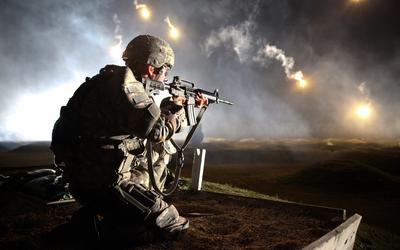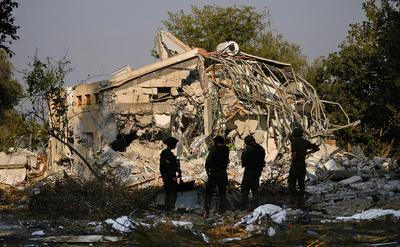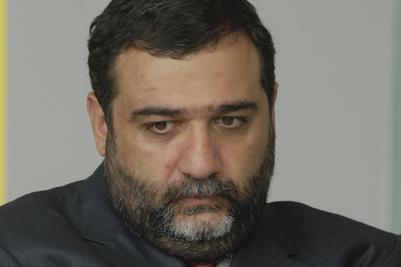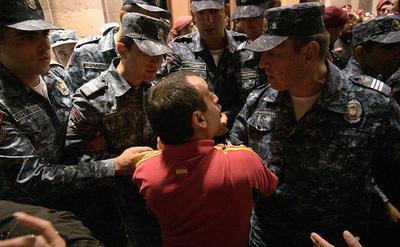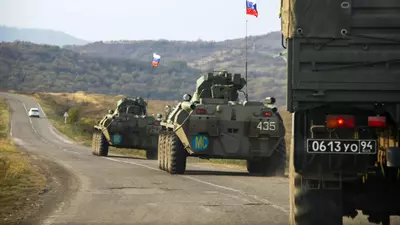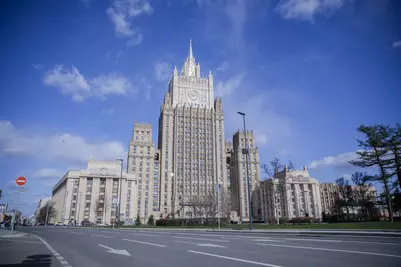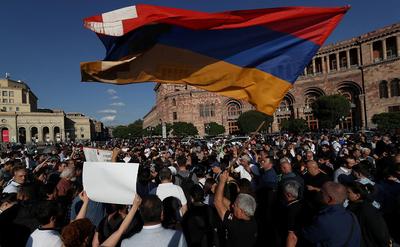Russian minefields have actually become an insurmountable obstacle for Ukrainian formations, which have launched a so-called counteroffensive since the beginning of June. This conclusion was voiced in an interview with RT by Lieutenant Colonel Oleg Klyukov, head of the department of mine-explosive barriers of the D.M. Karbyshev Central Research and Testing Institute of Engineering Troops (TSNIII IV). According to the officer, both the Soviet mining technique and the latest machines capable of creating minefields remotely proved themselves perfectly in the zone of the SVO. Kryukov also announced the imminent completion of state tests of the line of the latest means of universal minelayers UMZ-T, UMZ-K and UMZ-G.
— The topic of minefields does not go off the agenda against the background of constant attempts by the Armed Forces of Ukraine to break through our defensive lines. Please tell us about the importance of minefields in modern armed conflicts. To what extent are they a serious obstacle to the advancing forces?
— Since its appearance, mine-explosive barriers (MVZ) have always been a serious obstacle for the advancing forces. It is generally believed that the first minefields were used in the defense of Sevastopol during the Crimean War of 1853-1856, and this tool has been used in real mass since the beginning of the XX century.
In the armed conflicts of the last decades, the MVZ are created in front of the first line of defense. Aviation can be used for this, but in the vast majority of cases, various types of ground equipment are used, less often the sappers themselves are engaged in mining. Most often, anti-tank and anti-personnel mines are installed in the ground at the same time. Thus, the so-called mixed minefields are formed, making it difficult to advance all types of military equipment and infantrymen.
At the same time, it is necessary to understand that one of the main tasks of the Ministry of Internal Affairs is to delay the offensive of enemy forces. Minefields force the enemy to spend a certain amount of time overcoming them and evacuating damaged equipment, which can be used by the troops who are holding the defense.
What actions are the advancing forces taking to overcome the MVZ? They make passages, the width of which allows you to throw tanks, other equipment into battle, to conduct columns of troops.
This is how the Germans acted 80 years ago on the Kursk Bulge. They overcame the most powerful Soviet MVZ in a few days. The time spent by the enemy allowed the Red Army to transfer troops to the threatened areas. As a result, the pace of the Nazis' advance deep into the Soviet defense turned out to be far from planned, and then their offensive completely choked.
In fact, little has changed now. However, as the experience of the SVO and, in particular, the so-called counteroffensive of the Armed Forces of Ukraine shows, overcoming the MVZ has become noticeably more complicated.
The main reason is a more effective reconnaissance of the defending side. First of all, I mean drones. Monitoring with the help of UAVs allows you to detect enemy attempts to make passes much faster. After determining the coordinates, the sappers and the enemy's mine clearance technique are dealt a fire defeat.

But the worst thing for the attacking side is a poorly cut corridor in a minefield. If the enemy did not make a wide enough passage or the trawl did not eliminate all the explosive devices on the way, then the defending troops get the opportunity to destroy almost the entire column that went for a breakthrough. There are plenty of such episodes in THEIR zone.
To date, we can conclude that our minefields near the line of contact have become virtually an insurmountable obstacle for the Armed Forces of Ukraine. As far as I can tell, in most situations the enemy is not able to make passes and is detected in a timely manner.
Now the enemy's problems are also caused by an acute shortage of demining machines. As a result, the enemy command began to send infantrymen with the simplest sapper equipment to the minefields, but the pace of their work a priori cannot be sufficient. A passage 15-20 m wide, necessary for the passage of heavy equipment, can not be done manually like this.
The psychological moment is also important. Mine clearance, which continues in a certain area for several days and is accompanied by the loss of limbs, sharply reduces the morale of the personnel of the sapper unit. To minimize the risks, the APU tries to act at night. The dark time of day naturally masks any movements, but given the abundance of night vision devices, such tactics are not some kind of panacea.
I would also like to add that there is no universal "magic" means of combating installed mines in the world. In particular, the problem of trawl damage has not been solved. Now roller and knife trawls are used all over the world to make passages. The first cause mines with pressure principle fuses to be triggered, the second extract mines from the ground and take them away without detonation.
However, if there is an explosion of three to five anti—tank mines, then the replacement of the roller trawl is required. In turn, the problem of knife trawls is frequent jamming in the ground. As a result, cutting through the passage takes too much time for this process to be more or less safe.
— It is no secret that the engineering troops of the Russian Federation laid mainly Soviet TM-62/T-62M anti-tank mines in the zone of their own. How did they show themselves? Does Russia have more modern mines to fight tanks and other armored vehicles?
— Despite the considerable age of storage in warehouses, TM-62 series mines in the zone have demonstrated the ability to perform their main task — to kill the tracks of equipment, including modern NATO models like Leopard.
The detonation of the TM-62 is guaranteed to immobilize the tank. And in the field, caterpillar repair can take about an hour. This is sometimes critical for the SVO zone, and the evacuation of damaged equipment is fraught with great risk. For this reason, Ukrainian crews often abandon tanks, infantry fighting vehicles and wheeled vehicles, especially when artillery shelling begins. After that, our fighters either evacuate the captured equipment themselves, or try to finish it off by inflicting critical damage with the means at their disposal.
TM-62 combines a family of structurally simple and very reliable anti-tank mines, for which an effort of 150 kg is sufficient to trigger, depending on the fuse used. They are installed in a staggered order with the help of GMZ-3 tracked minelayers. This technique is capable of mining the ground at speeds up to 16 km/h and creating a minefield up to 2 km long with one TM-62 charge. A platoon consisting of three GMZ-3s is capable of creating an almost insurmountable minefield for tanks within 30 minutes.
Of course, the industry and scientific organizations of Russia have not stood still in recent years, and now modern anti-tank mines of various operating principles with electronic blocks have been adopted for the supply of engineering troops. This is an effective and insidious weapon for our enemies. The new mines, along with the time-tested TM-62, are successfully used in the zone of their own to defeat enemy equipment. Currently, the pace of production of modern engineering ammunition has increased.
— Before the SVO, it was reported on the website of the Ministry of Defense that a line of new means of universal minelayers is being developed and undergoing state tests to replace the GMZ-3: UMZ-T, UMZ-K and UMZ-G. Please tell us about the possibilities of this technique.
— The UMZ line is a universal minelayer capable of creating anti—personnel, anti-tank and mixed minefields thanks to the cassettes used with anti-tank and anti-personnel mines. Their state tests are currently being completed.
UMZ are necessary for the use of new engineering ammunition, which in their composition have electronic blocks — a kind of mini-computers, where certain initial data are entered before installation.
The advantages of the UMZ line are higher security compared to its predecessors and full automation of the minefield installation process, including the formation of a minefield form and its transfer to higher military authorities.
UMZ-T is an engineering vehicle mounted on the basis of an armored vehicle "Typhoon-Airborne" with a 4 × 4 wheel formula. It is a carrier of 60 cassettes and allows you to quickly create a MVZ in a limited area of the terrain.
UMZ-G is a heavy tracked vehicle created on the basis of the T-72 tank units. Its mass exceeds 43 tons. It is a carrier of 270 cassettes and is capable of shooting mines at a range of more than 40 m. At the same time, the mining speed of UMZ-G is more than twice as high as that of GMZ-3.
UMZ-K is a six—wheeled armored car ZIL-131 in deep modernization. It holds up to 180 cassettes, which can be installed in 15 minutes.
— How did the ISDM "Agriculture" prove itself in combat conditions? What advantages does remote mining provide in principle?
— ISDM "Agriculture" is the first domestic serial machine belonging to the class of remote mining engineering equipment. It is made on the principle of MLRS, only instead of rocket missiles it fires modern anti-tank and anti-personnel mines.
One combat vehicle holds an ammunition load of 50 shells. When recharging, the entire transport and launch container is replaced. The experienced crew of the complex is able to complete this task in a few minutes. "Agriculture" can "plant" mines up to 15 hectares of territory at a distance close to the range of an artillery shot.
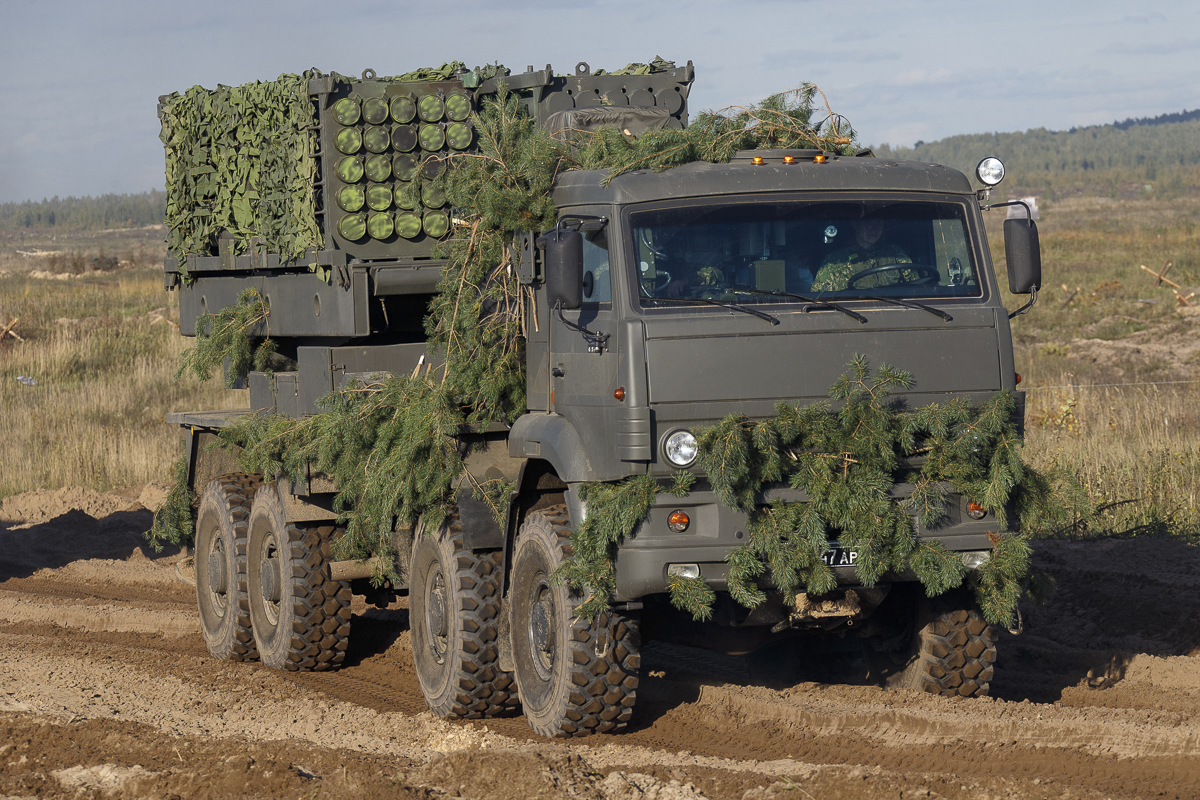
In the zone of its "Agriculture" showed itself from the best side. It allows you to minimize the risk of shelling from the enemy and in a short time to mine the necessary areas of the terrain: create new MVZ, compact existing ones and restore minefields where the enemy tried to pass. Moreover, the ISDM can create minefields in the tactical rear of the enemy, that is, arrange minefields for him.
In "Agriculture" the function of automatic topography is implemented, which significantly simplifies navigation and, accordingly, reduces the time to prepare for shooting. In addition, the ISDM itself calculates the firing parameters when entering a number of initial data and, without the operator's participation, compiles forms for installed mines, and then puts new MVZ on an electronic map.
— What can you tell us about the Western technique of making passages in minefields? How effective is it? First of all, we are interested in Wisent and M58 MICLIC (MineClearingLineCharge), which the APU has so far in small numbers.
— The Western equipment available to the Armed Forces of Ukraine for making passages in minefields does not exceed domestic analogues and, as we see by the number of damaged equipment, is not effective enough. Due to its low maneuverability, it becomes a convenient target for our artillery or anti—tank weapons, and often a victim of what it is designed to fight - Russian engineering ammunition.
Wisent, which is currently used by the APU, is a heavy engineering vehicle based on Leopard 2. It is a joint development of the British company Pearson Engineering and the German Flensburger Fahrzeugbau Gesellschaft. The UK manufactures a trawl and other equipment for mine clearance, and Germany provides the chassis.
Wisent is a fairly modern machine equipped with a solid knife trawl. But its main drawback is low efficiency due to the relatively low engine power (960 hp). As a result, Wisent hardly works in hard soils and in the presence of foreign inclusions in the soil: tree roots, stones and other objects. This NATO machine is more suitable for clearing desert and semi-desert terrain.
The M58 MICLIC, which you mentioned, is a kind of analogue of the domestic UR—77 "Serpent Gorynych". The launcher of the system is not self-propelled, it is made in the form of a trailer, which makes the M58 MICLIC immobile. Also, the American car is inferior to domestic means in the range of charging and protection. The use of the M58 MICLIC is possible only outside the conditions of contact with the enemy. Otherwise, there is a high probability of its destruction.
— How can you evaluate the Soviet technique of making passages in minefields, for example UR-77, and our latest models like UBIM?
— UR-77 is an example of the greatest achievement of Soviet engineering in the field of remote mine clearance. But at present, a modern UR-25 mine clearance unit is being successfully tested. It will replace the "Gorynych Snake" and surpass foreign analogues in its characteristics.
The UBIM universal armored engineering vehicle that you are asking about is designed to perform a wide range of engineering tasks.

She just started joining the army. UBIM is equipped with equipment that ensures the detonation of mines with non-contact target sensors, as well as a blade capable of clearing the way from mines with contact target sensors when moving. In addition, due to the high level of protection, UBIM is able to withstand many types of enemy weapons.
It is important that our country is moving towards a gradual reduction of the human role in mine clearance. For example, the Passage-1 robotic complex (RTK) received its baptism of fire in the SVO zone. This is a well-protected machine based on the T-90. It is controlled via a closed communication channel, and, if necessary, by a crew of two people.
Our institute has no doubt that the future in the field of mine clearance lies with remote complexes. But along the way, there are a lot of problems to be solved related to the protection of control channels and on-board automated systems from the effects of enemy electronic warfare. To date, so far it is most reliable to use mine clearance machines with a crew.
Source: russian.rt.com
Follow us on в Telegram

